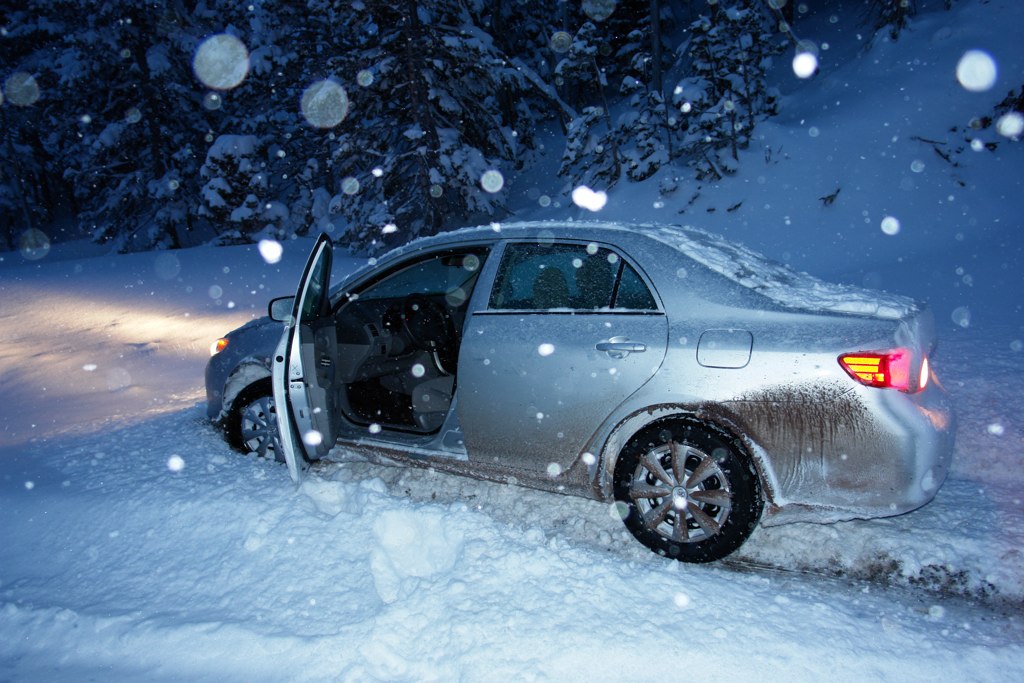 The snow that falls in Utah is a source of state pride. Utah snow is light and dry and there is usually a lot of it. Despite the “Greatest Snow on Earth”, Utah drivers know that driving in snow or heavy rain can be a daunting task. Heavy precipitation of any kind reduces visibility and pavement friction in addition to causing road obstructions. Even more dangerous than snow or rain is the ice that often forms after a storm during winter months.
The snow that falls in Utah is a source of state pride. Utah snow is light and dry and there is usually a lot of it. Despite the “Greatest Snow on Earth”, Utah drivers know that driving in snow or heavy rain can be a daunting task. Heavy precipitation of any kind reduces visibility and pavement friction in addition to causing road obstructions. Even more dangerous than snow or rain is the ice that often forms after a storm during winter months.
Each year an average of 1,511,000 car accidents are caused by poor weather conditions. From these accidents approximately 629,000 people are seriously injured and 7,130 people are killed. Over seventy-five percent, or about 472,000, of these weather-related accidents occurred on wet pavements. Breaking down the statistics even further shows that fifty-percent of the wet pavement accidents occurred in the winter weather conditions of snow, sleet, ice and slush.
In comparison fog accounts for roughly three percent of traffic accidents while rain accounts for the remaining forty-seven percent.
Statistics in the state of Utah are not as readily accessible as national statistics but icyroadsafety.com reports that icy roads contributed to 11 deaths in Utah. Compared to the 477 deaths due to icy roads nationwide that amounts to a mere two percent of icy road accidents. These numbers do not account for fatalities that occurred in snow, sleet or slush.
These numbers might be deceiving, however, because although 47 percent of weather related accidents occur in non-winter conditions, those accidents are spread out through roughly nine months of the year. Winter weather accidents, on the other hand, are more numerous but are compacted into three months.
Yesterday, with the freezing rain and consequent black ice, close to 200 traffic accidents were reported in the Salt Lake County alone. Many more accidents are likely to have been unreported.
Freezing rain is an anomaly in Utah. Since 1940 there have only been 10 recorded instances of freezing rain with the last recorded instance happening in Logan over three years ago. The water content of Thursday’s freezing rain was measured at a nine-hundredth of an inch, making it the highest water content in freezing rain since 1983.
Meteorologists blame the rain on the inversion. Freezing rain occurs when warmer rain falls through the shallow, cool air created by the inversion. This causes the rain to freeze and form a glaze ice on most surfaces on the ground.
The layer of ice is even worse than snow or slush because of how much it reduces friction between a car’s tires and the roadway. According to the Department of Transportation heavy snow can reduce the free flow speed on the highway by up to 64 percent. The layer of ice caused by freezing rain is likely to affect a cars speed even more.
Thankfully the freezing rain storm has passed and it will most likely be a long time before Utah sees another one like it. Unfortunately the same is not true for snow storms.
Image courtesy of Alex Proimos